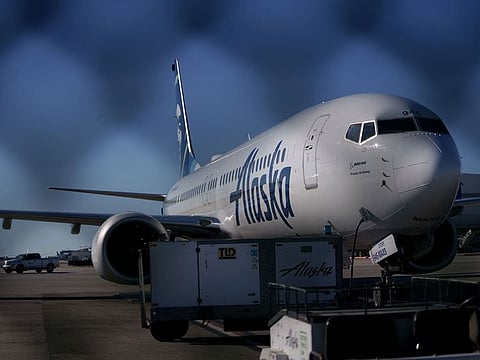Unravelling the story of Boeing’s in-flight door plug incident
Boeing 737 Max 9-Alaska Airlines flight 1282 crisis has shaken the aviation industry

Also In This Package
In the aftermath of the alarming in-flight blowout on Alaska Airlines Flight 1282 last week, the aviation industry finds itself grappling with the complexities and challenges posed by the incident involving the Boeing 737 Max 9.
Initial assurances of a swift diagnosis and resolution by US federal officials have given way to a more prolonged and intricate process, as disclosed by the Federal Aviation Administration (FAA) on Tuesday.
This revelation implies that all aircraft sharing the configuration of the recently updated Boeing 737, akin to Flight 1282, will remain grounded, further disrupting travel plans for passengers in the US for the days to come.
The repercussions of the dramatic in-flight door plug blowout on an Alaska Airlines Boeing 737 Max 9 continue to reverberate through both Boeing and the broader US air travel sector.
Horrible escape
Both the FAA and the National Transportation Safety Board are conducting separate investigations into the incident, and Boeing’s CEO, Dave Calhoun, has acknowledged shortcomings in the manufacturing and quality control processes, labelling the door plug failure as a “horrible escape.”
The FAA’s audit of Boeing’s 737 Max 9 production line and suppliers, focusing on quality control and assessing safety risks related to delegated authority and quality oversight, adds another layer of scrutiny to the situation.
The audit raises the possibility of involving a third party in the assessment, underscoring the severity of the situation and the need for a comprehensive review.
Meanwhile a winter storm, coupled with the ongoing grounding of Boeing 737 Max 9 planes, has contributed to thousands of cancellations. Notably, more than 200 United and Alaska Airlines flights have been cancelled daily, exacerbating the already challenging situation.
Amid the chaos, a class-action lawsuit has been filed against Boeing on behalf of the passengers of Alaska Airlines Flight 1282. Allegations range from physical injuries to emotional trauma, with claims for damages encompassing medical expenses, lost wages, and more.
Boeing's legal challenges
The lawsuit seeks a trial to determine the extent of the damages incurred by the affected passengers, underscoring the legal ramifications Boeing may face in the aftermath of this incident.
Aviation experts have raised serious questions about the structural design of the Boeing 737 Max 9, specifically scrutinising the section that detached from the plane during the incident.
Some argue that an alternative design, placing the door plug inside the plane, could have prevented the incident. However, practical and cost considerations may have influenced the chosen design, leaving experts perplexed about the rationale behind the configuration.
Examination, transparency, collaboration
As the aviation industry grapples with the aftermath of this incident, passengers, airlines, and regulatory authorities find themselves in a state of uncertainty, awaiting comprehensive investigations and viable solutions to ensure the safety and reliability of air travel in the future.
The evolving narrative of this crisis underscores the complexities inherent in maintaining the integrity of the aviation ecosystem, highlighting the need for collective efforts to address and rectify the issues at hand.
Only through rigorous examination, transparency, and collaboration can the industry rebuild trust and ensure the well-being of all stakeholders involved in air travel.
Sign up for the Daily Briefing
Get the latest news and updates straight to your inbox




